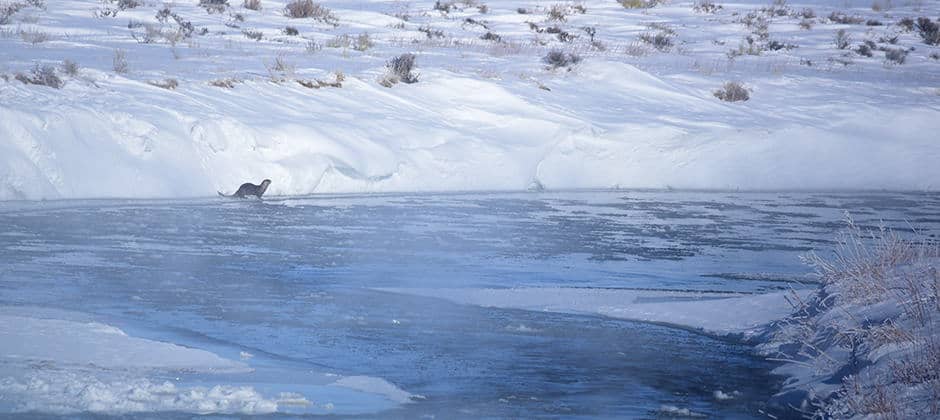Share this article
WSB: River otters prefer forested areas with dense wetlands
To learn more about the types of environments that river otters prefer in northern Wisconsin, old data on animal density can sometimes reveal new insights.
River otters are harvested for their fur in Wisconsin. Like any managed species, wildlife managers need to determine how populations are doing in order to set yearly trapping quotas. But that’s not so easy when it comes to river otters that spend a lot of time underwater or in their dens.
“They are a notoriously difficult species to monitor,” said Shawn Crimmins, a research ecologist with the U.S. Geological Survey.
To get count estimates for the species, the Wisconsin Department of Natural Resources typically conducted surveys by flying planes over wetlands. The easiest way to detect river otter (Lontra canadensis) presence from above is by looking for the distinctive track marks they leave in the snow, so the agency usually conducted surveys in the winter.
Crimmins and his colleagues wanted to see if the basic detection surveys the WDNR conducted might be mined for more kinds of data. While they only used the surveys to get rough estimates on population size, the agency staff plotted all their sightings on a map, for example.
In a study published recently in the Wildlife Society Bulletin, the team examined the detection survey information from 2013 through 2016 to learn more about the types of environments river otters might prefer.
Their main finding was that river otters were detected more in highly forested areas surrounded by high densities of wetlands. “They are really focusing on the best of the best,” said Crimmins, who was a professor at the University of Wisconsin-Stevens Point at the time of the research.
But the analysis also revealed some of the limitations of this type of survey. The climate has to be just right for the best probability of detection, for example. If it isn’t cold enough, all the ice melts and it’s difficult to detect tracks.
“It’s hard for a relatively small weasel to punch through a foot of ice,” Crimmins said.
On the other hand, very cold weather periods could mean that the wetlands all have solid ice cover. In these cases, river otters don’t emerge to leave tracks at all, staying underneath the ice and in the dens they access from the water.
“It was only when there was partial ice cover that we had a good chance to detect otters,” Crimmins said.
The findings suggest that if wildlife managers want to get the most accurate otter counts from aerial surveys, they should pay attention to the climate conditions of the period they plan to fly.
“If you’re going to be developing a monitoring program, it’s really important to be quantifying the effects of environmental conditions,” he said.
This article features research that was published in a TWS peer-reviewed journal. Individual online access to all TWS journal articles is a benefit of membership. Join TWS now to read the latest in wildlife research.
Header Image: From the air, it can sometimes by easier to spot river otter tracks than the otters themselves. Credit: Tom Koerner/USFWS








